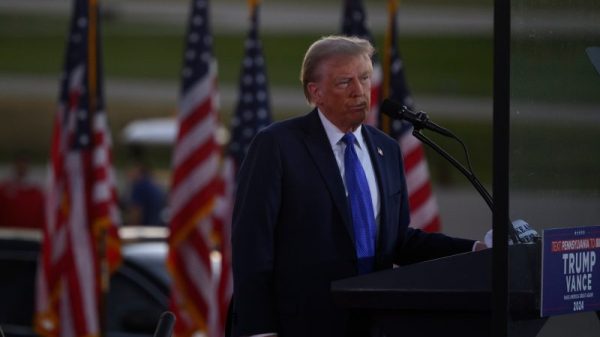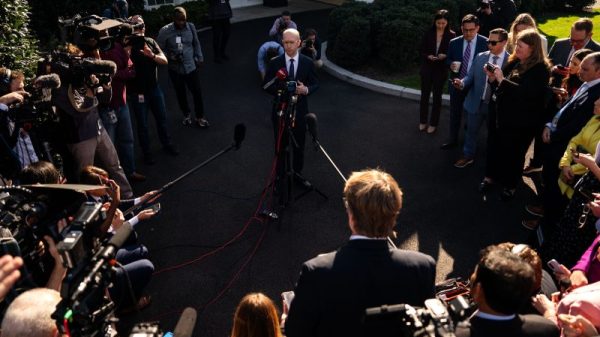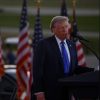It was a slow start to the week for gold, but it didn’t take long for the price to pick up.
The yellow metal began the period at the US$3,220 per ounce level, but was gaining steam by Tuesday (May 20), briefly breaking US$3,300. Gold continued higher the next day, and after pulling back briefly on Thursday (May 22) was able to finish the week strong, changing hands at the US$3,360 level.
Bond market turmoil is one factor that’s been influencing gold’s price movements.
A Wednesday (May 21) auction of 20-year bonds was poorly received, with yields surging past 5.1 percent to reach the highest level seen since November 2023. Yields for 10-year and 30-year bonds were also on the rise, with the latter nearing a two-decade high as stocks and the dollar took hits.
The upheaval in bonds came on the back of US President Donald Trump’s efforts to get the One Big Beautiful Bill through the House. Slowing the passage of the wide-ranging domestic policy package were concerns that Trump’s plan to cut taxes would significantly increase US debt.
‘Make no mistake, the bond market will have its own vote on the terms of the budget bill. It doesn’t seem this president or this Congress is actually going to meaningfully reduce the deficit’ — George Catrambone, DWS Americas
Last week’s downgrade of US debt from Moody’s (NYSE:MCO) also didn’t help bonds. The agency bumped its rating down from AAA, its highest ranking, to AA1, which is one step lower. It expects even larger deficits in the US in the coming decade as government revenue stays flat and entitlement spending rises.
The One Big Beautiful Bill ultimately passed on Thursday by a very slim margin, receiving 215 votes in favor and 214 against. It will now proceed to the Senate, where it may face further obstacles.
Contained in the bill are tax cut extensions for both individuals and corporations, as well as provisions for removing taxes on tips and overtime. Among other points, it also allows for tax deductions on American-made vehicles, and offers ‘Trump savings accounts’ for newborns. It cuts funding to initiatives like Medicaid and the Supplemental Nutrition Assistance Program, better known as SNAP.
Preliminary analysis from the Congressional Budget Office, which is a nonpartisan organization, suggests that the bill will increase the federal deficit by US$3.8 trillion during the 2026 to 2034 period.
Bullet briefing — Trump signs nuclear orders, ECB issues gold warning
Trump executive orders boost uranium stocks
The uranium sector got a boost on Friday (May 23) after Trump signed several executive orders geared at overhauling the country’s Nuclear Regulatory Commission and speeding up nuclear reactor deployment.
‘It’s a hot industry. It’s a brilliant industry. You have to do it right,’ Trump told reporters about the nuclear energy sector. The executive orders also focus on power up US uranium mining and enrichment, and will allow nuclear reactors to be built on federal land.
The news sent uranium stocks powering higher, with sector major Cameco (TSX:CCO,NYSE:CCJ) closing the day up 10.04 percent at C$80.55. Denison Mines (TSX:DML,NYSEAMERICAN:DNN) and Uranium Energy (NYSEAMERICAN:UEC) saw even larger gains of 13.49 percent and 25 percent, respectively.
The Sprott Uranium Miners ETF (ARCA:URNM) finished up 12.14 percent.
Gold a threat to financial stability?
A note from the European Central Bank (ECB) turned heads this week with the suggestion that certain dynamics could make the gold market a threat to financial stability. Here’s a key excerpt from the report:
While gold prices are driven by many factors, investors showed high demand for gold as a safe haven asset and, at the beginning of 2025, a notable preference for gold futures contracts to be settled physically. These dynamics hint at investors’ expectations that geopolitical risks and policy uncertainty could remain elevated or even intensify in the foreseeable future. Should extreme events materialise, there could be adverse effects on financial stability arising from gold markets.
The full ECB report is definitely worth a read if you have the time.
China’s April gold imports surge
Gold’s high price hasn’t deterred buyers in China — new customs data from the country shows that April imports clocked in at 127.5 metric tons, an 11 month high.
That’s also a 73 percent increase from the previous month, according to Bloomberg. The news outlet notes that China’s central bank controls the flow of gold in and out of the country, so the strong increase is likely the result of fresh quotas given to some commercial banks.
Securities Disclosure: I, Charlotte McLeod, hold no direct investment interest in any company mentioned in this article.










